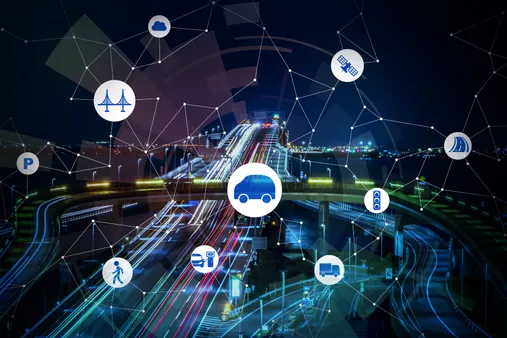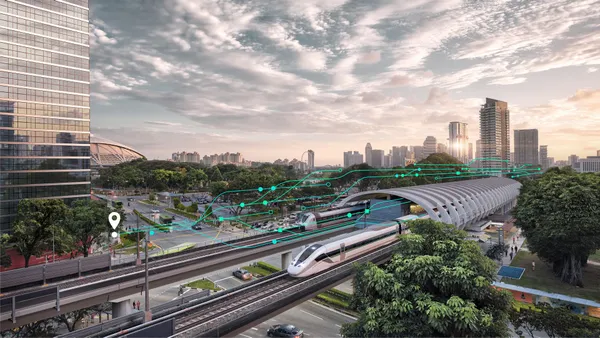Table of Contents
Mobility is the ability to move freely and easily. It is an essential part of our lives, allowing us to get around, explore, and interact with the world around us. At Kizworld, we believe that** mobility** is a fundamental human right and that everyone should have the opportunity to move freely and easily. In this article, we will explore the importance of** mobility**, the different types of** mobility**, the benefits of** mobility**, the challenges to** mobility**, and the future of** mobility**.
Next Level Mobility: The Ultimate Gateway to Seamless Movement
I. Mobility: The Key to a More Accessible and Inclusive World
Mobility: The Key to a More Accessible and Inclusive World
Mobility: A Fundamental Human Right
At kizworld, we believe that mobility is a fundamental human right and that everyone should have the opportunity to move freely and easily. Mobility is essential for our physical and mental health, allowing us to explore the world around us, connect with others, and live full and active lives.
Why is Mobility Important? | Benefits of Mobility |
|---|---|
Increased independence | Improved physical health |
Increased social interaction | Reduced risk of chronic diseases |
Improved mental health | Increased life expectancy |
Challenges to Mobility
Unfortunately, not everyone has the same opportunities for mobility. There are many barriers that can prevent people from moving freely and easily, including:
- Physical barriers, such as stairs, narrow doorways, and lack of ramps
- Social barriers, such as stigma, discrimination, and lack of understanding
- Economic barriers, such as lack of affordable transportation and housing
These barriers can have a devastating impact on people's lives. They can make it difficult for people to get to work, school, or the doctor. They can also make it difficult for people to socialize, participate in activities, and live independently.
The Future of Mobility
The future of mobility is bright. There are many new technologies and innovations that are making it easier for people to move freely and easily. These include:
- Self-driving cars
- Electric bikes and scooters
- Accessible public transportation
- Smart cities
These technologies have the potential to revolutionize the way we move around. They can make it easier for people to get to where they need to go, reduce traffic congestion, and make our cities more livable.
Conclusion
Mobility is a fundamental human right. Everyone should have the opportunity to move freely and easily, regardless of their ability, age, or income. By working together, we can create a more accessible and inclusive world for everyone.
How to Improve Your Flexibility and Mobility with Gymnastics
II. Mobility Solutions for the Elderly and Disabled
Mobility Solutions for the Elderly and Disabled
Making Mobility Accessible
- Kizworld offers a wide variety of wheelchairs and mobility scooters designed to meet the needs of individuals with disabilities.
- Walkers and canes provide stability and support for those who have difficulty walking.
- For those who need additional support, mobility aids such as grab bars and shower chairs can make a big difference.
Improving Mobility and Quality of Life
- Regular exercise can help to improve mobility and overall health.
- For those with limited mobility, adaptive sports and activities can provide a way to stay active and engaged.
- Making simple home modifications can make a big difference in accessibility and safety.
Conclusion
Mobility is an essential part of life, and it should be accessible to everyone. With the right mobility solutions, elderly and disabled individuals can live full and active lives.
III. The Role of Technology in Enhancing Mobility
The Role of Technology in Enhancing Mobility
Technology has played a pivotal role in enhancing mobility, transforming the way we move and interact with the world around us. From the invention of the wheel to the development of modern transportation systems, technology has continuously pushed the boundaries of human mobility.
One of the most significant contributions of technology to mobility is the development of motorized vehicles. The invention of the automobile in the late 19th century revolutionized transportation, making it possible for people to travel long distances quickly and easily. This led to the growth of suburbs and the expansion of cities, as people were no longer confined to living within walking distance of their workplaces or other essential services.
- The automobile also made it possible for people to travel for leisure, leading to the development of the tourism industry.
- The invention of the airplane in the early 20th century further expanded the possibilities of mobility, allowing people to travel across vast distances in a matter of hours.
- This led to the growth of international trade and travel, as well as the spread of ideas and cultures.
In recent years, technology has continued to drive innovation in mobility. The development of electric vehicles, self-driving cars, and ride-sharing services is transforming the way we think about transportation. These technologies have the potential to make mobility more sustainable, efficient, and accessible for everyone.
Technology has also played a vital role in enhancing mobility for people with disabilities. The development of assistive devices, such as wheelchairs, prosthetics, and hearing aids, has made it possible for people with disabilities to move more freely and independently. Additionally, the development of accessible transportation systems, such as wheelchair-accessible buses and trains, has made it easier for people with disabilities to travel.
Technology | Impact on Mobility |
|---|---|
Wheelchair | Allows people with disabilities to move more freely and independently. |
Prosthetics | Replaces lost limbs and helps people with disabilities to walk, run, and perform other activities. |
Hearing aids | Amplifies sound and helps people with hearing loss to hear better. |
Accessible transportation systems | Makes it easier for people with disabilities to travel. |
Technology is also being used to develop new forms of mobility, such as exoskeletons and jetpacks. These technologies have the potential to revolutionize the way we move, making it possible for people to travel over difficult terrain or even fly.
As technology continues to advance, we can expect to see even more innovative and groundbreaking developments in mobility. These technologies have the potential to make the world a more accessible and inclusive place for everyone.
Here are some related posts that you may find interesting:
- How to Improve Your Mobility and Flexibility with Yoga
- The Benefits of Tai Chi for Mobility and Balance
- How to Choose the Right Mobility Aid for Your Needs
IV. Creating Mobility-Friendly Communities
Mobility is essential for people to live full and active lives. It allows us to get around, explore our surroundings, and connect with others. However, for many people, mobility is a challenge. This can be due to a variety of factors, including disability, age, or injury.
Mobility-friendly communities are those that are designed to make it easy for people of all abilities to get around. This includes features such as accessible sidewalks and curb ramps, public transportation, and accessible building entrances. Mobility-friendly communities also have a variety of things to see and do, making them attractive places to live, work, and visit.
Benefits of Mobility-Friendly Communities
- Increased mobility for people of all abilities
- Improved safety for pedestrians and cyclists
- Reduced traffic congestion
- Improved air quality
- Increased economic activity
Components of Mobility-Friendly Communities
| Component | Description |
|---|---|
Accessible sidewalks and curb ramps | Sidewalks and curb ramps that are wide enough and have a smooth surface to allow people with disabilities to use them safely |
Public transportation | Public transportation that is accessible to people with disabilities and that provides service to all parts of the community |
Accessible building entrances | Building entrances that are wide enough and have a smooth surface to allow people with disabilities to enter safely |
Things to see and do | A variety of things to see and do for people of all abilities, including parks, museums, and shopping centers |
How to Create a Mobility-Friendly Community
- Conduct a mobility assessment.
- The first step in creating a mobility-friendly community is to conduct a mobility assessment. This assessment should identify the barriers to mobility that exist in the community and the improvements that are needed.
- Develop a mobility plan.
- Once the mobility assessment has been completed, a mobility plan should be developed. This plan should outline the steps that will be taken to make the community more mobility-friendly.
- Implement the mobility plan.
- The final step is to implement the mobility plan. This may involve making changes to the physical environment, such as adding accessible sidewalks and curb ramps, or developing new programs and services, such as accessible transportation.
Creating mobility-friendly communities is an important goal for all communities. By making it easier for people of all abilities to get around, we can create more inclusive and livable communities for everyone. At kizworld, we are committed to creating mobility-friendly communities. We believe that everyone deserves the opportunity to move freely and easily.Mastering Basic Gymnastics Skills
V. Conclusion
Mobility is essential for human freedom and well-being. It allows us to move freely and easily, to explore our surroundings, and to interact with others. As technology continues to advance, we can expect to see even more innovative and accessible mobility solutions that will make it easier for everyone to move around. At kizworld, we are committed to promoting mobility for all and to creating a world where everyone has the opportunity to move freely and easily.